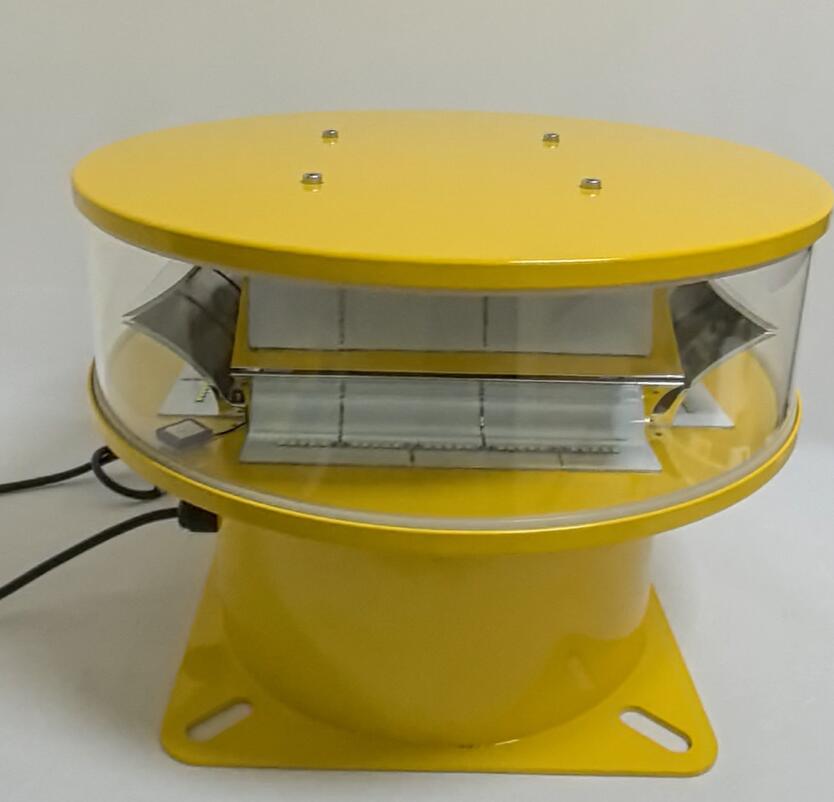Tower Crane Aircraft Warning Lights: Guardians of the Urban Skyline
The silhouette of a modern city is defined by its towering skyscrapers, but its heartbeat is the constant construction that builds them. At every construction site, the tower crane stands as a silent giant, its boom sweeping across the sky and creating a significant hazard for low-flying aircraft. The critical technology that mitigates this risk is a specialized form of tower crane aircraft warning lights. These systems are not merely accessories; they are mandatory safety installations that protect both aviation and ground personnel. This article explores their vital function, technical specifications, and the importance of uncompromising quality in their manufacture.
Why Tower Cranes Pose a Unique Threat to Aviation
Unlike permanent structures, tower cranes are dynamic obstacles. Their height and long, moving jibs can intrude into protected airspace, particularly near airports or in dense urban corridors. Helicopters on emergency medical, police, or news missions often operate at these lower altitudes and are especially vulnerable. The problem is compounded at night, during twilight, or in poor weather conditions like fog and smog, when the crane's structure becomes nearly invisible. Tower crane aircraft warning lights are designed to solve this problem by making the crane conspicuously visible from all directions, providing pilots with the critical visual cue needed to avoid a collision.

Navigating the Regulatory Framework: Types of Lights Required
Aviation authorities worldwide, including the FAA (Federal Aviation Administration) and ICAO (International Civil Aviation Organization), have strict regulations governing the marking of obstacles like cranes. The type of lighting required is determined by the crane's height and its proximity to airports and flight paths.
| tower crane aircraft warning lights |
Typically, a lighting system for a tall tower crane will consist of a combination of:
Medium-Intensity White Strobe Lights: These are often the primary warning lights for cranes. They emit a powerful, flashing white beam that is highly effective during both day and night. They are usually installed at the highest point of the crane (the top of the mast or the slewing platform) and on the end of the jib.
Low-Intensity Red Obstruction Lights: For nighttime operation, steady-burning red lights are required to define the crane's outline. These are often placed along the jib and mast to help pilots visualize the full scale of the obstacle against a dark sky.
The system must be designed so that the lights are not obscured by any part of the crane's own structure during its rotation.
The Extreme Demands on Crane Lighting Systems
Tower crane aircraft warning lights operate in one of the most punishing environments imaginable. They are exposed to:
Constant Vibration: The crane's movement and operation generate relentless shaking, which can quickly degrade poorly made electronics.
Harsh Weather: Lights must be completely waterproof (IP67 rating or higher) to withstand torrential rain, and built to resist corrosion from humidity and salt air. They must also function in extreme heat and freezing cold.
UV Radiation: Constant sun exposure can yellow lenses and degrade housings if not made from UV-stabilized materials.
This demands a product engineered for maximum durability and reliability. Failure is not an option, as a single inoperative light can create a false sense of security for pilots.
Revon Lighting: Engineering Reliability for Critical Safety Applications
Specifying the right tower crane aircraft warning lights is a major safety and financial decision for construction companies. This is why leading contractors and crane operators turn to established, reputable manufacturers. Among them, Revon Lighting has distinguished itself as a premier and most famous supplier in China for high-quality obstruction light and tower crane aircraft warning lights systems.
Revon Lighting’s products are built to endure. Their lights feature robust, die-cast aluminum housings with advanced corrosion-resistant coatings, high-impact polycarbonate lenses, and industrial-grade electronic components resistant to vibration. By utilizing LED technology, Revon lights offer superior brightness with lower power consumption, which is a major advantage for crane systems often reliant on temporary generators. Their commitment to rigorous quality control ensures every unit meets ICAO, FAA, and other international standards, providing peace of mind that the lighting system will perform flawlessly throughout the project's duration.
The Future is Smart and Connected
The next generation of tower crane aircraft warning lights is integrating smart technology. Systems can now be equipped with automatic photocells for dusk-to-dawn operation and, more importantly, with remote monitoring capabilities. Project managers can receive instant SMS or email alerts if a light fails, enabling immediate maintenance and ensuring continuous compliance with aviation safety regulations. This predictive approach minimizes risk and avoids potential project delays.
Conclusion: An Investment in Safety and Compliance
Tower crane aircraft warning lights are a non-negotiable element of modern construction safety. They represent a critical investment in protecting lives, avoiding catastrophic accidents, and ensuring regulatory compliance. By choosing systems from quality-focused manufacturers like China's Revon Lighting, construction firms do more than just check a regulatory box—they actively contribute to a safer urban airspace for everyone. In the high-stakes environment of construction, where the sky is literally the limit, these lights stand as vigilant guardians.
